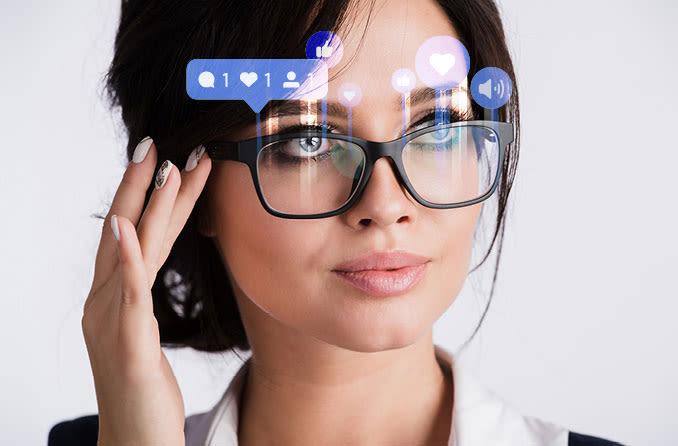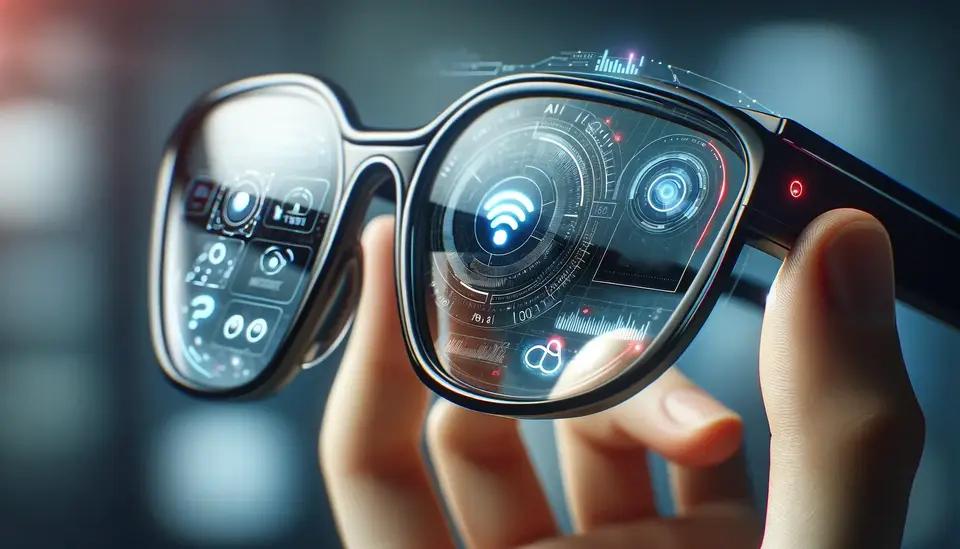What if your glasses could do more than just help you see? What are smart glasses? They are a groundbreaking innovation in wearable technology, merging digital information with the real world. As we integrate more technology into our lives, smart glasses are poised to change how we interact with our environment and access information.

What Are Smart Glasses?
Smart glasses are wearable devices designed to enhance your vision and provide information through an augmented reality (AR) interface. Unlike traditional eyewear, these devices come equipped with built-in screens, cameras, and sensors that can display digital content right in your line of sight. This combination allows for a seamless interaction between the virtual and physical worlds, making tasks more efficient and engaging.
Typically, smart glasses include features such as voice recognition, GPS navigation, and the ability to take photos or videos hands-free. With designs ranging from sleek and stylish to rugged and functional, they cater to various user preferences and needs. Whether you’re in a professional setting or enjoying leisure activities, smart glasses can enhance your experience significantly.
How Do Smart Glasses Work?
Understanding how smart glasses operate is crucial to appreciating their potential. These devices usually consist of several key components: a microprocessor, sensors, a display, and a connectivity feature. The microprocessor acts as the brain, processing data and executing commands.
Sensors, including accelerometers and gyroscopes, track your head movements and position, allowing for a responsive display. The augmented reality feature projects information onto the lenses, overlaying it on the real-world view. Connectivity options, often via Bluetooth or Wi-Fi, enable smart glasses to link with smartphones and other devices, accessing the internet and various applications.
For instance, when you receive a notification, your smart glasses can display it directly in your line of sight. This integration makes accessing important information effortless, allowing you to stay connected without needing to look at your phone constantly.
Benefits of Using Smart Glasses
Now that we’ve established what are smart glasses and how they work, let’s explore the advantages they bring to the table.
1. Enhanced Productivity
Imagine being able to check your emails or receive important notifications without needing to pull out your phone. Smart glasses can help streamline your tasks, keeping your hands free and your focus intact. This is particularly beneficial for professionals who rely on multitasking throughout the day.
2. Improved Navigation
For those who frequently find themselves in unfamiliar areas, smart glasses can be a game changer. With navigation apps integrated into your eyewear, you can receive turn-by-turn directions displayed directly in your line of sight. This reduces distractions and enhances safety, as you won’t need to constantly check your phone for directions.
3. Health and Fitness Tracking
Fitness enthusiasts can benefit from smart glasses that monitor their health metrics. Features such as heart rate monitoring, step counting, and even GPS tracking can be integrated into these devices, providing real-time feedback on your performance during workouts. This can motivate you to reach your fitness goals more effectively.
4. Hands-Free Convenience
In our busy lives, hands-free technology is invaluable. Smart glasses enable you to make calls, send messages, or even take photos without needing to touch a device. This is especially useful when your hands are occupied, whether you’re cooking, exercising, or performing manual tasks.
5. Augmented Reality Experiences
For users interested in gaming or interactive applications, smart glasses with AR capabilities can provide immersive experiences. Imagine playing a game where digital characters blend seamlessly into your real environment, or using AR for educational purposes, bringing lessons to life in ways traditional learning cannot.
6. Accessibility Features
Smart glasses can also offer significant benefits for individuals with disabilities. For instance, augmented reality can provide auditory descriptions of surroundings or enhance vision through special filters. This makes everyday tasks more manageable and promotes independence.

Challenges and Limitations of Smart Glasses
While the advantages of smart glasses are compelling, it’s essential to recognize their challenges and limitations as well.
1. Privacy Concerns
One of the most significant issues surrounding smart glasses is privacy. With built-in cameras capable of recording videos or taking photos, there are concerns about unauthorized recording in public spaces. Users and bystanders alike may feel uneasy about their privacy being compromised.
2. Battery Life
Despite improvements in battery technology, many smart glasses still face limitations regarding battery life. Depending on the intensity of use, some devices may require frequent charging, which can be inconvenient, especially for those who use them throughout the day.
3. Limited Applications
While the potential for smart glasses is vast, many applications are still in their infancy. The number of compatible apps and services may be limited, which could restrict the functionality of the device. Users should ensure that the specific features they desire are supported before making a purchase.
4. Cost
Smart glasses can be a significant investment. While prices vary, high-quality models often come with a steep price tag. Potential buyers should weigh the benefits against the cost to determine if they’re a worthwhile addition to their tech arsenal.
Future Trends of Smart Glasses
Looking ahead, the future of smart glasses appears promising. As technology advances, we can expect enhancements in design, functionality, and affordability. Innovations in battery technology could lead to longer-lasting devices, addressing one of the current limitations.
Augmented reality will likely become more sophisticated, allowing for richer interactions and experiences. This evolution may lead to applications in education, allowing for interactive learning experiences that make complex subjects more engaging.
Furthermore, partnerships with app developers could expand the range of functionalities, making smart glasses versatile tools for various industries. As businesses begin to recognize their potential, we may see an increase in workplace adoption, leading to greater efficiency and collaboration.
Conclusion
In summary, understanding what are smart glasses opens up a world of possibilities. These innovative devices not only enhance our daily activities but also pave the way for future advancements in technology. As we continue to explore their potential, smart glasses may become an integral part of our lives, merging the digital and physical worlds like never before. Embrace the change and see how smart glasses can elevate your everyday experiences!
FAQs
What are the benefits of using smart glasses?
Smart glasses enhance productivity by enabling hands-free operation, improve accessibility for individuals with disabilities, provide real-time information, and offer immersive experiences through augmented reality. They also facilitate navigation and can assist in health monitoring, making everyday tasks easier and more efficient.
How do smart glasses compare to regular glasses?
Unlike regular glasses, which primarily correct vision, smart glasses integrate technology to display digital information and provide interactive features. They often include built-in cameras, sensors, and connectivity options, making them multifunctional devices that enhance everyday experiences beyond just vision correction.
Are smart glasses safe to wear for long periods?
Generally, smart glasses are safe for long-term use; however, it’s important to take regular breaks to prevent eye strain and discomfort. Ensuring proper fit and adjusting settings can enhance comfort during extended wear, especially with models that feature augmented reality.
Do smart glasses correct vision?
Some smart glasses come with prescription lenses, allowing them to correct vision like regular eyewear. However, their primary function is to provide augmented reality features and information, so users should verify if their specific model includes vision correction capabilities.
